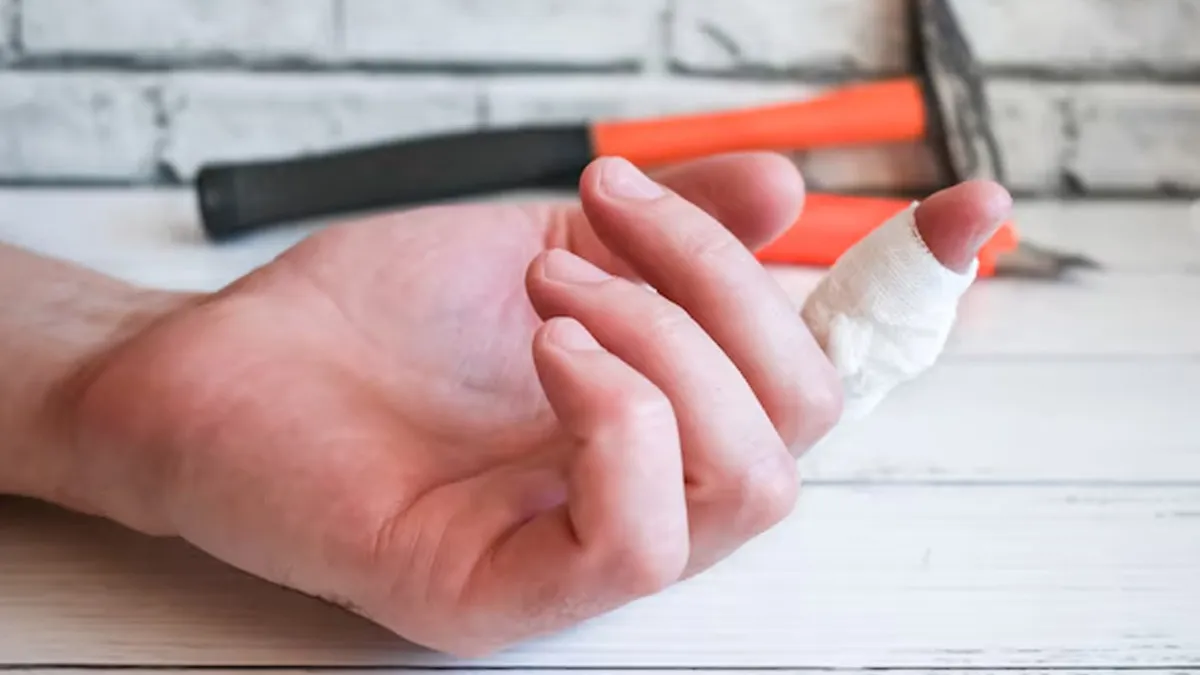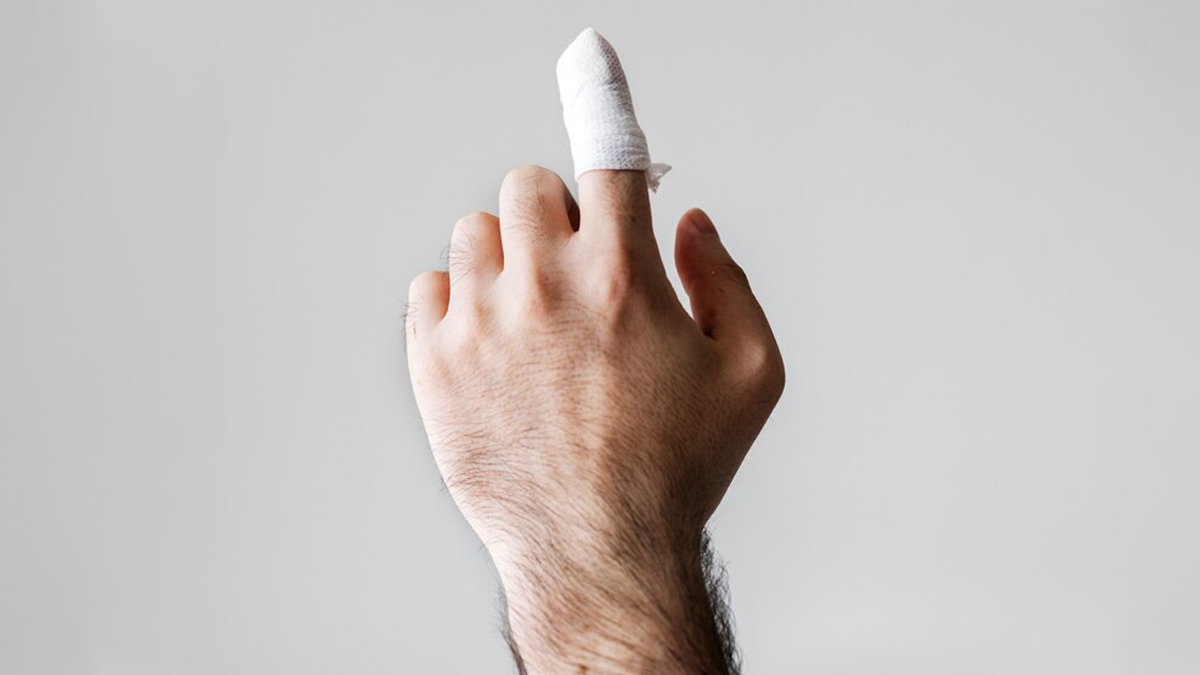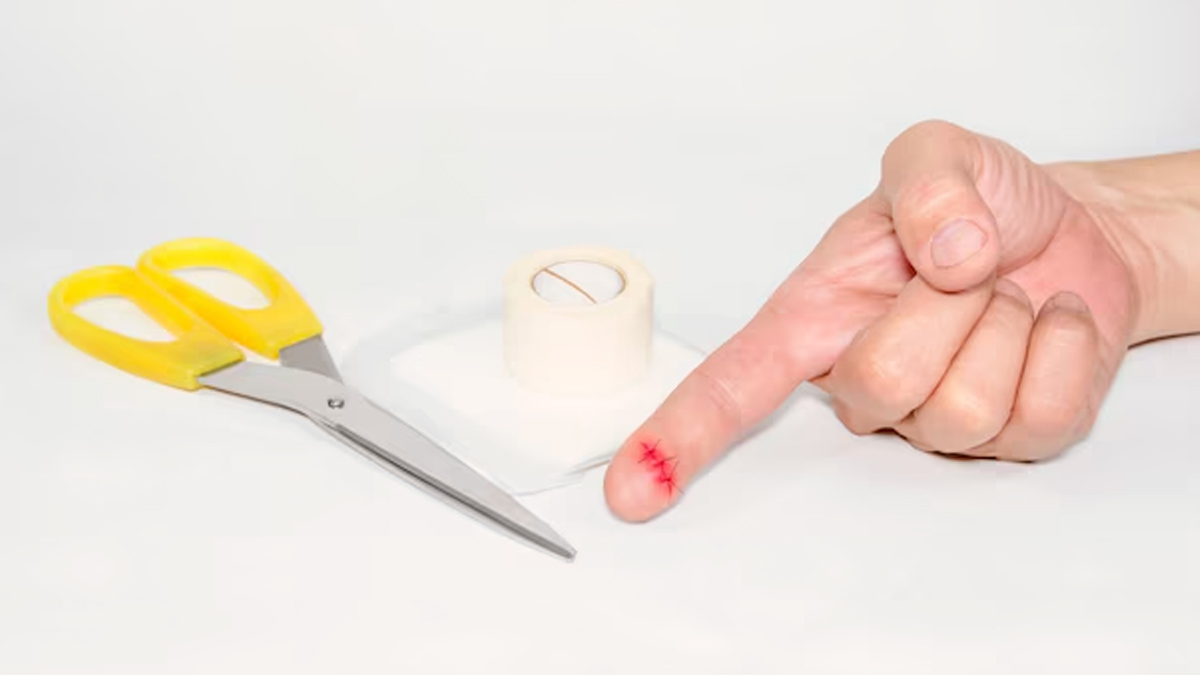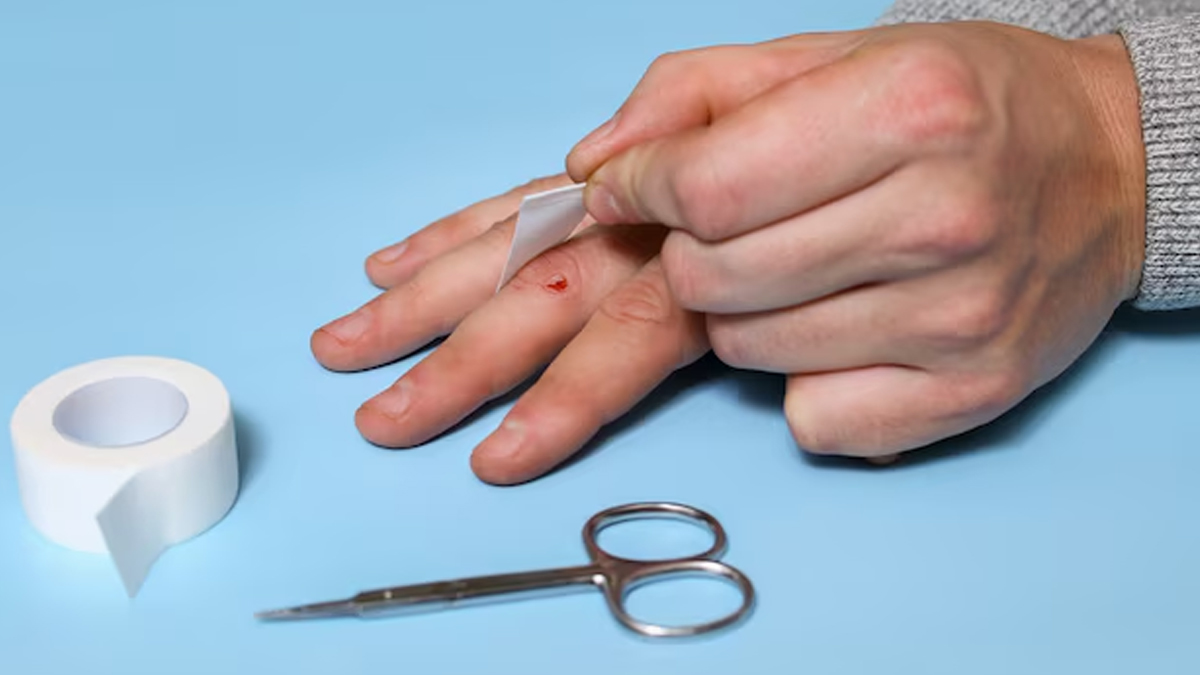
Cuts and scrapes are common, more so in children who are fearless and adventurous by nature. This does not mean adults are safe. You can cut your hand too while chopping vegetables or touching something sharp, or since it is winter, even from something as harmless as a piece of paper.
Table of Content:-
While a cut is mostly harmless, it should be treated immediately and not left open, as open wounds are prone to infections. In an interaction with the OnlyMyHealth team, Dr G M Prasad, Senior Consultant - Internal Medicine, Aster CMI Hospital, Bengaluru, discusses some of the first aid measures to tend to a cut at home.
Also Read: Wound Healing Gets Slower As You Age: Here's Why
First Aid Tips To Manage A Cut At Home

When you experience a cut or a wound, it is important to treat it immediately to prevent infections. Some of the first aid measures and do’s and don’ts involve:
- Thoroughly wash your hands with soap and water to prevent a bacterial infection.
- Gently rinse the cut under clean, running water.
- Do not scrub the wound, as this could cause further damage.
- Pat the area dry with a clean cloth or sterile gauze.
- Apply an antiseptic solution to help disinfect the wound.
- Cover the cut with a sterile bandage or dressing to protect it from external contaminants.
Mistakes To Avoid While Cleaning A Wound

When you are in the process of cleaning and dressing a wound or a cut, it is crucial to steer clear of certain mistakes that you might unknowingly commit:
- Avoid using harsh soaps or alcohol-based solutions, as these can irritate the tissue and delay the healing process; instead choose gentle saline solutions or mild antiseptics.
- Avoid touching the wound with unwashed hands or using non-sterile materials, as this can introduce harmful bacteria and lead to infections.
- Avoid covering the wound too tightly, as this can block blood flow and hinder the healing process.
Also Read: Healing Wounds: Try These Home Remedies To Treat Your Infected Wounds Naturally
How To Know If A Cut Requires Medical Attention

To determine whether a cut requires medical attention or not depends on various factors.
Dr Prasad recommends assessing the depth and length of the cut; if it is deep to the extent of exposing underlying tissues or if it measures more than half an inch in length, it is advisable to seek a doctor's help.
Additionally, if the wound continues to bleed excessively despite applying pressure for several minutes, it may require medical attention. Furthermore, check for the location of the cut; wounds on areas such as joints may need stitches to speed up healing and reduce scars.
Most importantly, if there are signs of an infection, such as redness, swelling, or discharge, you must consult a doctor urgently.
Takeaway
It is extremely important to clean and treat a cut or a wound properly no matter how harmless it seems. Some types of cuts can be prone to infections, which can become concerning over time. To prevent that from happening, immediately cleaning the wound, removing dirt or debris, and applying an antiseptic solution are crucial steps. One should also cover the cut with a sterile bandage and should frequently change the dressing. With these important steps and more, one can effectively manage their wounds at home.
Also watch this video
How we keep this article up to date:
We work with experts and keep a close eye on the latest in health and wellness. Whenever there is a new research or helpful information, we update our articles with accurate and useful advice.
Current Version